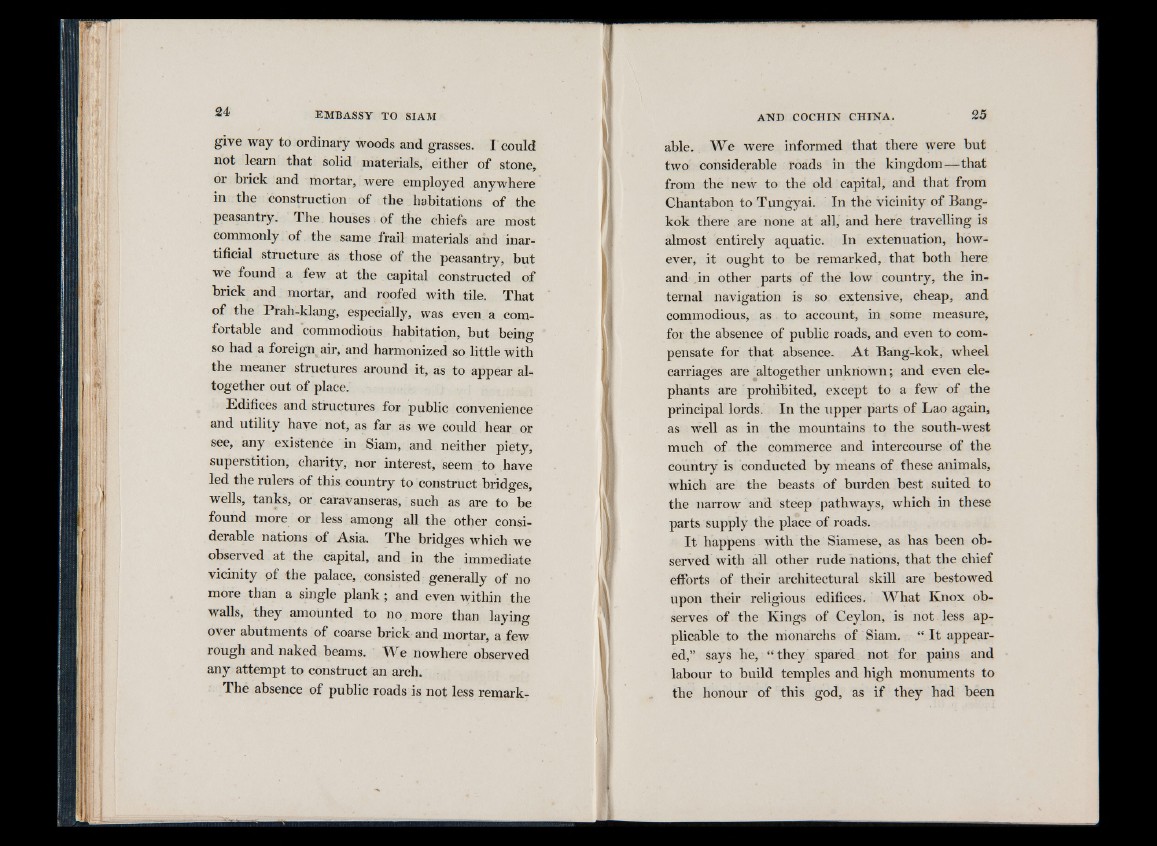
give way to ordinary woods and grasses. I could
not learn that solid materials, either of stone,
or brick and mortar, were employed anywhere
in the construction of the habitations of the
peasantry. The houses of the chiefs are most
commonly of the same frail materials and inartificial
structure as those of the peasantry, hut
we found a few at the capital constructed of
brick and mortar, and roofed with tile. That
of the Prah-klang, especially, was even a comfortable
and commodious habitation, but being
so had a foreign^ air, and harmonized so little with
the meaner structures around it, as to appear altogether
out of place.
Edifices and structures for public convenience
and utility have not, as lar as we could hear or
see, any existence in Siam, and neither piety,
superstition, charity, nor interest, seem to have
led the rulers of this, country to construct bridges,
wells, tanks, or caravanseras, such as are to be
found more or less among all the other considerable
nations of Asia. The bridges which we
observed at the .capital, and in the immediate
vicinity of the palace, consisted generally of no
more than a single p lan k ; and even within the
walls, they amounted to no more than laying
over abutments of coarse brick and mortar, a few
rough and naked beams. We nowhere observed
any attempt to construct an arch.
The absence of public roads is not less remarkable.
We were informed that there were but
two considerable roads in the kingdom—that
from the new to the old capital, and that from
Chantabon to Tungyai. In the vicinity of Bangkok
there are none at all, and here travelling is
almost entirely aquatic. In extenuation, however,
it ought to be remarked, that both here
and Jn other parts of the low country, the internal
navigation is so extensive, cheap, and
commodious, as to account, in some measure,
for the absence of public roads, and even to compensate
for that absence. A t Bang-kok, wheel
carriages are altogether unknown; and even elephants
are prohibited, except to a few of the
principal lords. In the upper parts of Lao again,
as well as in the mountains to the south-west
much of the commerce and intercourse of the
country is conducted by means of these animals,
which are the beasts of burden best suited to
the narrow and steep pathways, which in these
parts supply the place of roads.
I t happens with the Siamese, as has been observed
with all other rude nations, that the chief
efforts of their architectural skill are bestowed
upon their religious edifices. What Knox observes
of the Kings of Ceylon, is not less applicable
to the monarchs of Siam. “ I t appeared,”
says he, “ they spared not for pains and
labour to build temples and high monuments to
the honour of this god, as if they had been